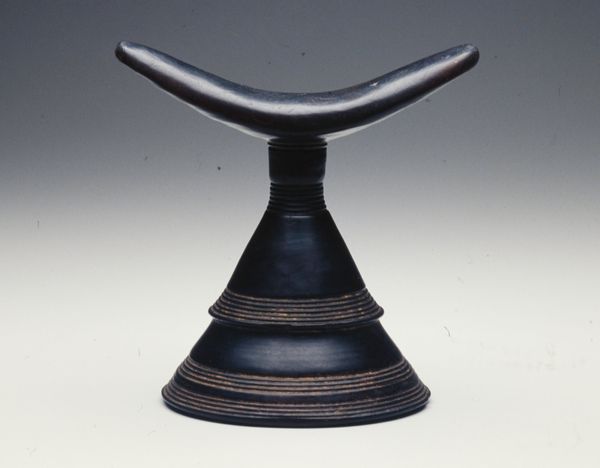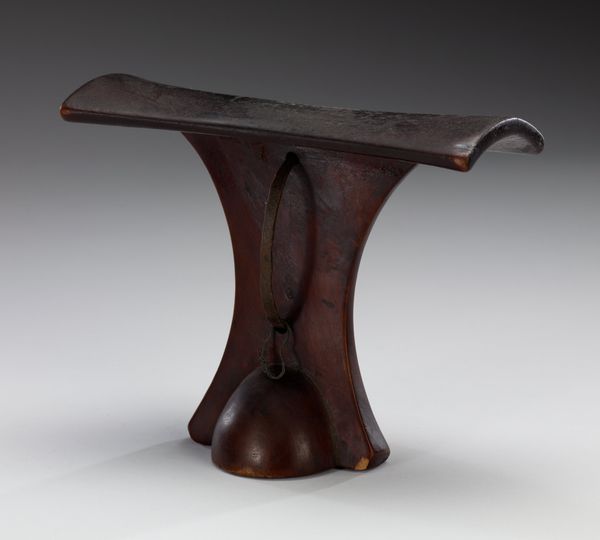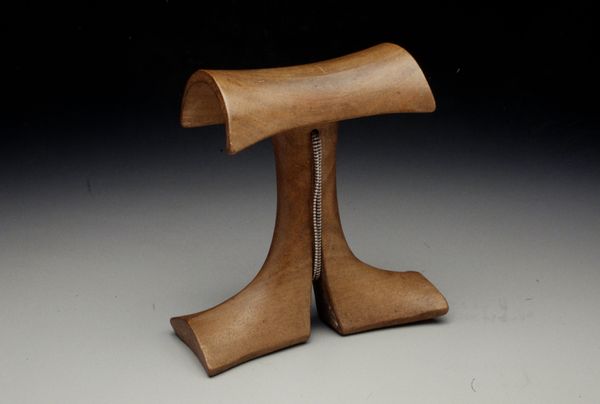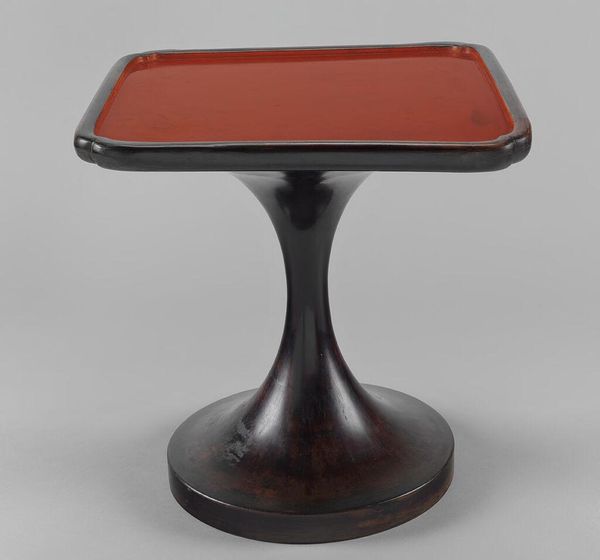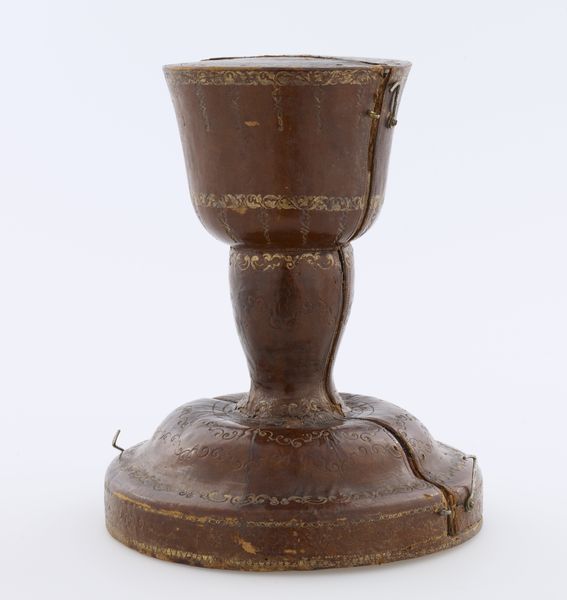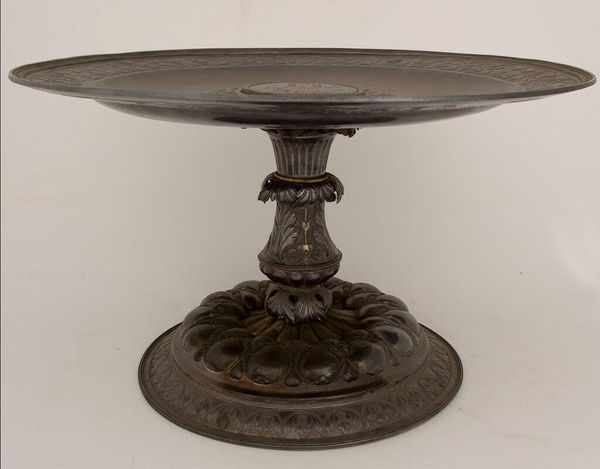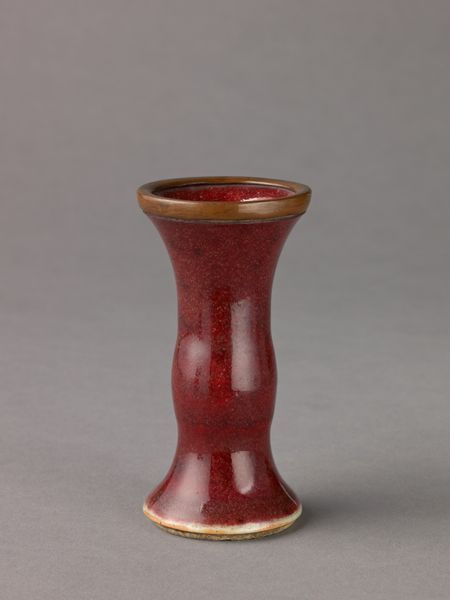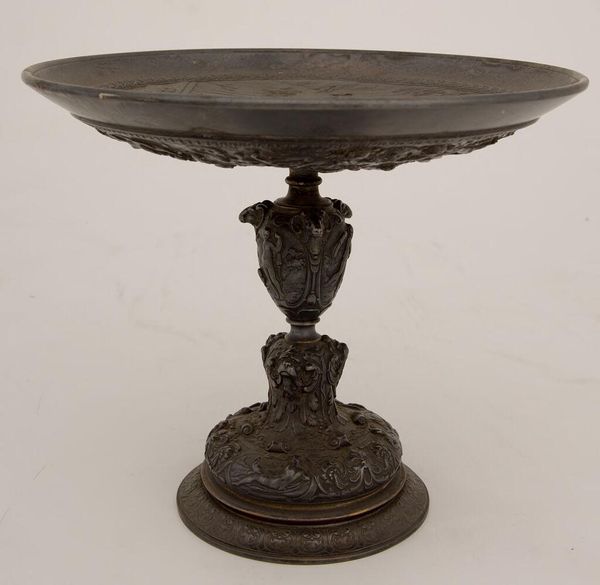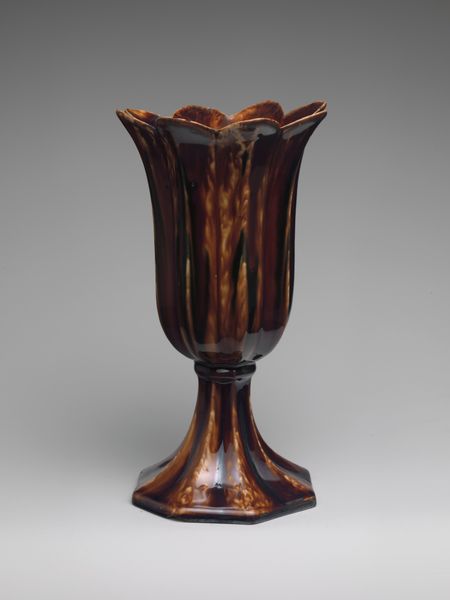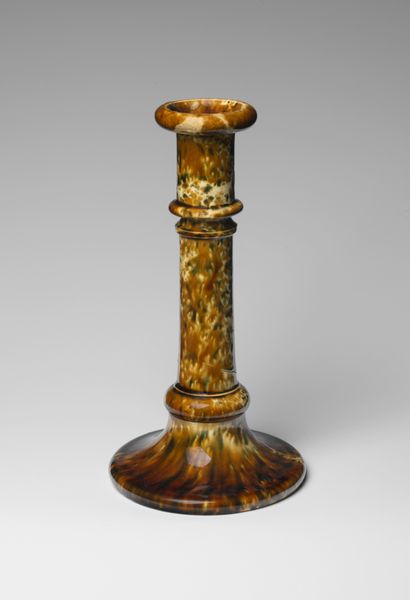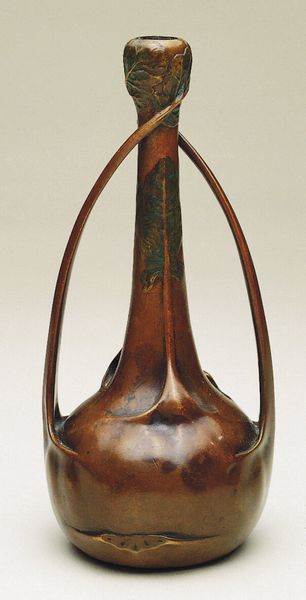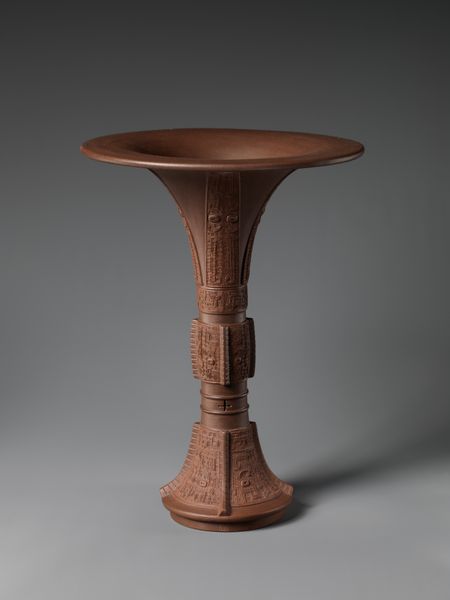
carving, sculpture, wood
#
carving
#
sculpture
#
ceramic
#
wood
Dimensions: 6 1/8 x 4 3/4 x 4 3/4 in. (15.6 x 12.1 x 12.1 cm)
Copyright: Public Domain
Curator: Well, here we have an intriguing object: an Oromo headrest, crafted sometime in the 19th century. The piece resides here at the Minneapolis Institute of Art and it's beautifully carved from wood. Editor: It's surprisingly elegant, isn’t it? There's a sense of smooth, polished simplicity to it. And a strange asymmetry, making it less "functional" in a way. I’m immediately curious about its function beyond its material form. Curator: Absolutely. The headrest, far beyond a mere pillow, played a profound role in Oromo culture. Consider the elevated status that comes with resting one's head upon such an object. These aren’t just practical supports. Editor: They remind me of the ank or a royal scepter—something both personal and symbolic. Given its significance, what would one’s community or status have to be to have earned the right of using such an object? What was their societal role? Curator: Social identity is certainly a key component. It’s believed these objects reflect the individual's spirit, acting as a personal altar, if you will. When one sleeps, the headrest guards their spirit. But also, we shouldn't neglect its role in preserving elaborate hairstyles which indicated tribal affiliation and social position. Editor: Interesting. It suggests a whole range of political connotations inherent in personal adornment. The form reminds me a little bit of a simplified tree of life, the base acting as roots. Did these objects generally stay with one person their entire lives, like a treasured heirloom? Curator: Yes, that's the understanding. And sometimes these headrests even accompanied the individual into the afterlife, symbolizing the continuity of the spirit's journey. So they were cherished personal objects closely tied to beliefs. Editor: And you start to wonder: did the individual request this type of symbolic form, or was it part of a generalized artistic tradition of the region and time? Perhaps further research can provide details about the particular significance and circulation of similar objects in collections worldwide. It raises important questions about object ownership in this socio-historical context too, doesn't it? Curator: Indeed. I find myself drawn to the endurance of symbols – how these seemingly simple forms carry echoes of belief, connecting us to a cultural heritage. The power of the human spirit, reflected in wood. Editor: For me, this unassuming object provokes thoughts about power, status, and self-representation—how seemingly humble objects played a critical role in projecting cultural identity, shaping individual experience and collective memory.
Comments
No comments
Be the first to comment and join the conversation on the ultimate creative platform.

